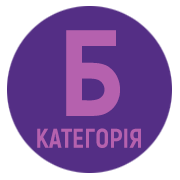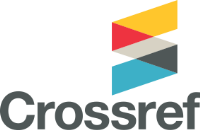KINESIOLOGY AS AN INNOVATIVE METHOD OF CORRECTION IN EDUCATIONAL PRACTICE
DOI:
https://doi.org/10.32782/inclusion/2025.5.1Keywords:
children with special educational needs, psychophysical development disorders, educational practice, correction, correctional work, interhemispheric interaction, kinesiology, physical development, neuromotorics, innovation, method, exercisesAbstract
The article presents theoretical and practical experience in using kinesiology as an innovative correction method in educational practice. It was found that cognitive methods and methods of motor correction are used in working with children with psychophysical development disorders, one of which is kinesiotherapy. The work highlights the polysemantic nature of this concept, presents an integrative approach to the use of kinesiotherapy in various fields of science and practice. It is determined that kinesiology is a synthetic science that combines morphology, physiology, biomechanics, biochemistry, somatomotorics and didactics in a systemic unity, the main subject of study of which is the motor function of the human body. Further scientific research in psychology and neurophysiology has shown the positive impact of hand (body) movements on the development of human intelligence. The term is proposed in a new interpretation – “educational kinesiology”, the concept of which was developed by scientists Paul and Gail Dennison at the end of the twentieth century. It was determined that the main goal of educational kinesiology is the development of interhemispheric interaction and synchronization of the work of the cerebral hemispheres, which contributes to the activation of mental activity. A set of exercises for the development of neuromotor skills and pedagogical conditions for their use during correctional and developmental classes with children with psychophysical development disorders are proposed. The first group of exercises was aimed at activating attention and preparing both hands for performing more complex neurogymnastics exercises; the second – active work with hands and fingers; the third – hands and fingers in combination with different parts of the body (general motor skills, eye movements), speech; the fourth – work in pairs or visualization. Thus, the results of the study indicate the need for a systemic and interdisciplinary approach in the professional activity of a teacher-defectologist when building an individual trajectory of a child’s development, which actualizes the need to use innovative correction methods, one of which is kinesiotherapy.
References
Галущенко В. Впровадження кінезіотерапевтичних вправ у реабілітаційно-комплексній роботі з дітьми. Науковий часопис Національного педагогічного університету імені М.П. Драгоманова. Серія 19 «Корекційна педагогіка та спеціальна психологія». 2014. Вип. 27. С. 44–48.
Кочева Н. Освітня кінезіологія – гімнастика для мозку. Практичні поради та рекомендації для педагогів. Всеосвіта : бібліотека методичних матеріалів. 2023. URL: http://surl.li/cmppbp.
Левшунова К. Рухова активність як чинник психічного благополуччя дошкільників : дис. … канд. псих. наук : 19.00.07. Київ, 2015. 23 с.
Литвяк Н. Освітня кінезіологія «Гімнастика для мозку». Всеосвіта: бібліотека методичних матеріалів. 2023. URL: http://surl.li/wnppwy.
Рібцун Ю. Формування міжпівкульної взаємодії як засіб психомовленнєвого розвитку дітей з інтелектуальними порушеннями. Теорія і практика спеціальної педагогіки та психології / катедра спеціальної освіти Національного університету «Запорізька політехніка». 2021. С. 101–113.
Притиковська С. Використання кінезотерапії у логопедичній практиці. Актуальні проблеми корекційної освіти. Кам’янець-Подільський : Медобори-2006. 2015. Вип. 5. С. 238–251.
Нейропсихологія : навчальний посібник / О. Чабан та ін. Тернопіль : ТДМУ «Укрмедкнига», 2008. 92 с.
Шевцов А., Ільїна О. Нейропсихологічний підхід у корекції розвитку дітей із психофізичними порушеннями. Актуальні питання корекційної освіти (педагогічні науки). Кам’янець-Подільський : Медобори-2006, 2015. C. 347–360.







